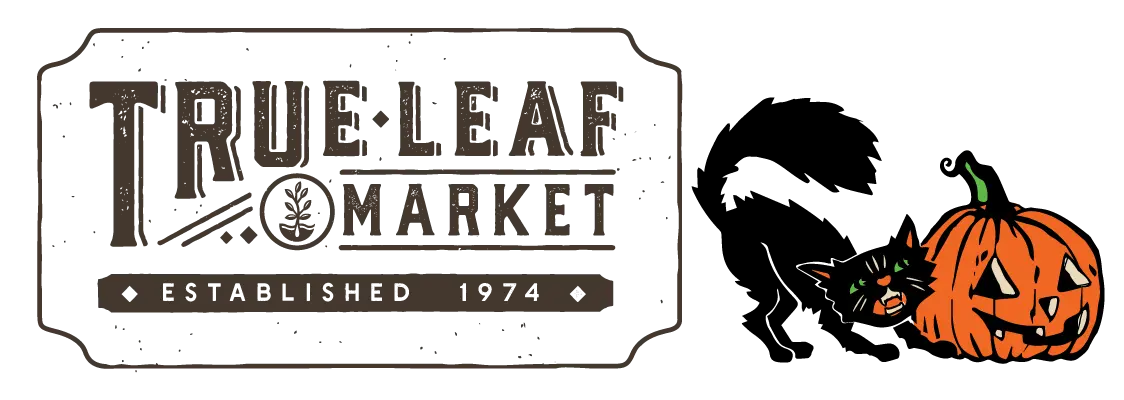
What Is Companion Planting?
Companion planting is the practice of growing plants alongside each other for a variety of benefits. These can include natural pest control properties, better pollination, and improved growth. While people have a tendency to seek organization by separating plants into groups, gardens thrive with greater diversity. When growing vegetables, don’t forget to disperse flowers throughout your growing space. By having blooms available throughout the growing season, you can observe greater yields as pollinators are continually attracted to your space. Not only are pollinators attracted to your garden, but so are beneficial insects known to control pests like aphids, leafhoppers, squash bugs, snails, and slugs. Many flowers also put out aromas that repel pests. By increasing the diversity found throughout your garden, you can reduce the need for pesticides, as beneficial insects can often get a pest issue under control before you even notice.
Benefits of Companion Planting
🦗Deter Pests
Different plants have different natural chemicals or aromas that can act as pest deterrents. Growing these plants throughout the garden is a great way to organically reduce pest problems in the garden.
🐞Attract Beneficial Insects
In addition to repelling certain insects, many plants attract beneficial insects like pollinators or those that prey on common pests. Common beneficial insects include bees, lacewings, ladybugs, parasitic wasps (do not protect hives or bite people), and praying mantis.
In some instances, plants can also be used to lure unwanted garden pests away from plants being grown for harvest. These are called trap crops. These plants are grown because they are more attractive than your garden crops are to destructive pests. They act as a type of sacrifice you are okay with being eaten away, while the pests stay away from your desired harvest. Growers may plant these near certain crops in the garden, or around the perimeter of larger fields.
🐝Attract Pollinators
While flowers generally attract pollinators, some are more beneficial than others. Pollinators like bees, especially native species, rely on nectar and pollen-rich plants for shelter and food. Bloom color can also affect how attracted pollinators are to your garden. For example, bees are most attracted to shades of purple, violet, and blue. While they can’t see red, they can see yellow and orange. Butterflies are most attracted to orange, red, yellow, pink, and purple. Hummingbirds are most attracted to red and pink flowers, especially those with a complex shape. By growing an assortment of bloom colors, shapes, and bloom times, you can enjoy pollinators in your garden all season long!
🌱Improve Plant Health
As plants grow, they can affect the chemical makeup of the soil in ways that benefit the other plants around them. This is commonly seen as legumes are able to fix nitrogen from the air into a form usable by plants for uptake in the soil. These changes can also help enhance the flavor of your harvesting crops.
🥬Support or Shade
While companion planting is most notable for its ability to help with pest control, support and shade are also reasons to grow certain plants together. This example is best observed with the traditional Native American growing practice with the three sisters. This includes growing corn, beans, and squash together. The corn acts as a vertical support for the beans, while the squash spreads across the ground, suppressing weeds. The beans also contribute to this relationship by fixing nitrogen for all to benefit. Heat-sensitive plants like lettuce and other leafy greens can also benefit from the shade created by tall plants like corn and sunflowers. Pairing these types of plants together can also help you to make better use of your growing space.
🌾Weed Suppression
While growing in rows with dedicated spacing guidelines for each crop can be helpful for large-scale farming, it is much more beneficial to utilize ALL of your growing space in the home garden. Part of this is the weed-suppressing benefits of keeping the soil covered. Many flowers are able to fill out a growing space without becoming a burden on the root development of your vegetables. When soil is covered by plants or blocked by plant matter, weeds struggle to become established, resulting in a healthier growing space.
Best Companion Plants for the Vegetable Garden
Alyssum
Attracts - Pollinators and Beneficial Insects (Green Lacewings)
Pair With - Throughout the garden
Amaranth
Living Trellis
Attracts - Beneficial Insects (Beetles)
Pair With - Corn, Cucumbers, Eggplant, Onions, Peppers, Potatoes, Tomatoes
Basil
Repels - Aphids, Tomato Hornworm, Mosquitoes, Spider Mites, and Whiteflies
Pair With - Peppers, Potatoes, Tomatoes
Borage
Attracts - Pollinators
Repels - Deer, Cabbage Moth Caterpillars, Hornworms
Pair With - Cucumber, Squash, Melons, Tomatoes
Calendula
Attracts - Pollinators (Nectar Source)
Repels - General Garden Pests, Beetles, Root Nematodes
Pair With - Potatoes, Squash, Tomatoes
Avoid - Lettuce
Lavender
Start Indoors 10-12 Weeks
Attracts - Pollinators
Repels - Moths, Fleas, Flies, Mosquitoes
Pair With - Lettuce, Onions, Squash, Tomatoes
French Marigold
Direct Sow or Start Indoors 4-6 Weeks
Repels - Whitefly, Mexican Bean Beetle, Root Nematodes
Pair With - Cucumber, Melons, Potatoes, Tomatoes
Avoid - Beans
Nasturtium
Direct Sow or Start Indoors 4-6 Weeks
Attracts - Pollinators
Repels - Cucumber Beetle, Squash Beetles, Colorado Potato Beetles, Mexican Bean Beetles, Whiteflies
Pair With - Brassicas, Cucumbers, Melons, Radishes, Squash, Tomatoes
Petunia
Start Indoors 10-12 weeks
Trap Crop - Brassicas
Repels - Aphids, Squash Bugs, Leafhoppers, Hornworms, Asparagus Beetle
Pair With - Grapes, Arugula, Cucumbers, Peppers, Potatoes, Tomatoes
Sage
Start Indoors 8-10 Weeks
Attracts - Pollinators and Beneficial Insects (Hoverflies)
Repels - Cabbage Moth, Carrot Fly, Flea Beetles
Pair With - Brassicas, Carrots
Avoid - Cucumbers, Eggplant, Peppers, Potatoes, Tomatoes
Sunflower
Direct Sow
Living Trellis
Attracts - Pollinators and Beneficial Insects (Ladybugs)
Pair With - Melons, Squash
Zinnia
Direct Sow or Start Indoors 4-6 Weeks
Attracts - Pollinators and Beneficial Insects (Predatory Wasps)
Repels - Tomato Hornworms, Cucumber Beetles
Pair With - Cucumbers, Eggplant, Lettuce, Squash, Tomatoes



























